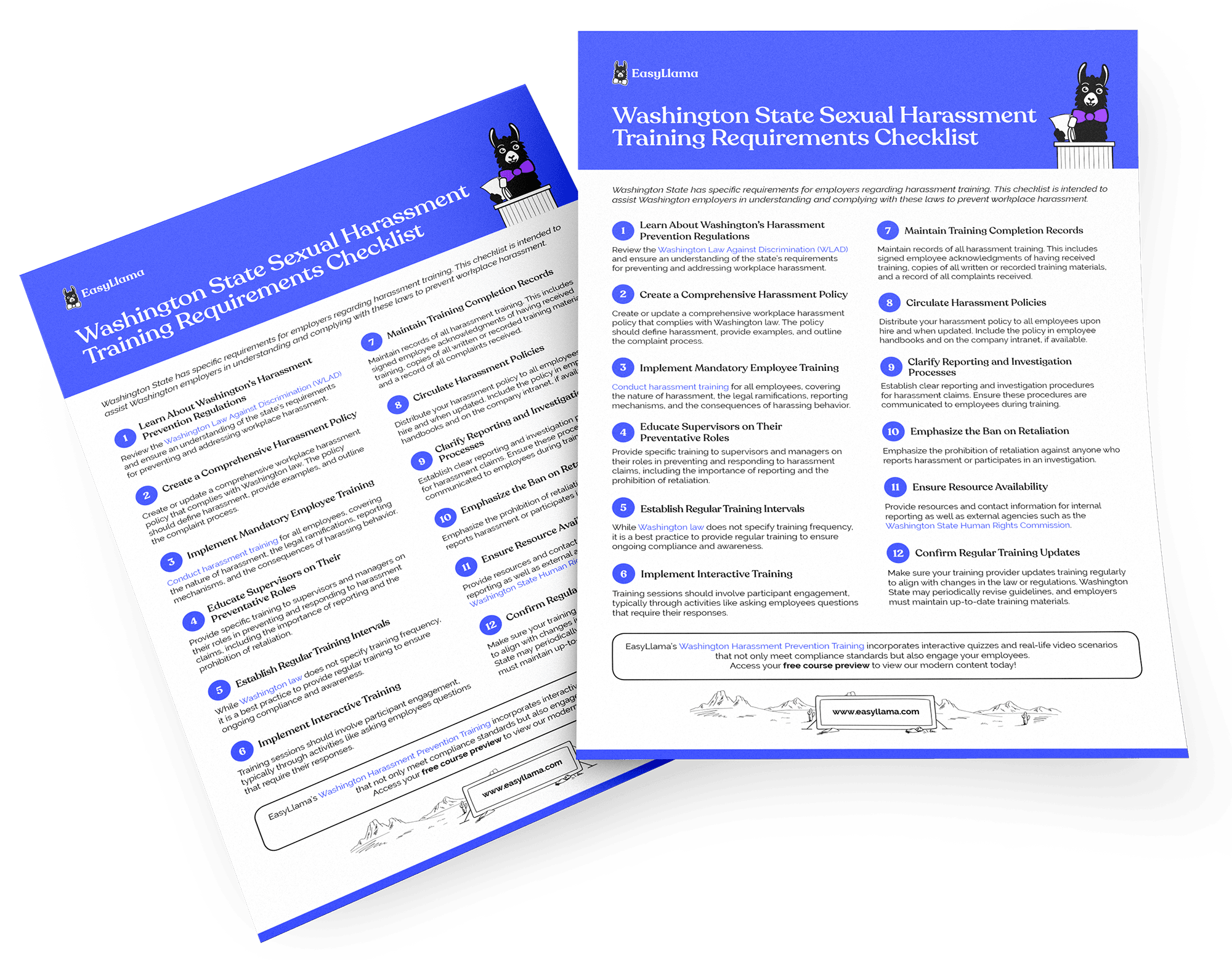Washington State Sexual Harassment Training Requirements Checklist
Washington State has specific requirements for employers regarding harassment training. This checklist is intended to assist Washington employers in understanding and complying with these laws to prevent workplace harassment.

Get Your Organization Trained Today
TRUSTED BY OVER 8,000 AMAZING COMPANIES
closer look
What's Inside
- 1
Learn About Washington’s Harassment Prevention Regulations
Examine the Washington Law Against Discrimination (WLAD) to ensure that you understand the state's requirements for preventing and dealing with workplace harassment.
- 2
Create a Comprehensive Harassment Policy
Create or update a thorough workplace harassment policy that is in accordance with Washington state law.
- 3
Implement Mandatory Employee Training
Conduct harassment training for all employees, addressing topics such as the nature of harassment, legal ramifications, reporting systems, and the consequences of harassing behavior.
- 4
Educate Supervisors on Their Preventative Roles
Supervisors and managers should get special training on their duties in avoiding and responding to harassment claims, including the necessity of reporting and the prohibition on retribution.
- 5
Establish Regular Training Intervals
While Washington law does not require training on a regular basis, it is best practice to deliver it on a regular basis to guarantee continuous compliance and knowledge.
- 6
Implement Interactive Training
Training sessions should include activities that engage participants, such as asking staff questions that need responses.
- 7
Maintain Training Completion Records
Keep records of any harassment training.
- 8
Circulate Harassment Policies
Distribute your harassment policy to all new workers and update it as needed.
- 9
Clarify Reporting and Investigation Processes
Establish clear reporting and investigation procedures for reports of harassment.
- 10
Emphasize the Ban on Retaliation
Emphasize the prohibition on retaliation against anybody who reports harassment or cooperates with an investigation.
- 11
Ensure Resource Availability
Provide tools and contact information for both internal and external reporting bodies, such as the Washington State Human Rights Commission.
- 12
Confirm Regular Training Updates
Ensure that your training provider constantly updates training to reflect changes in the legislation or regulations.